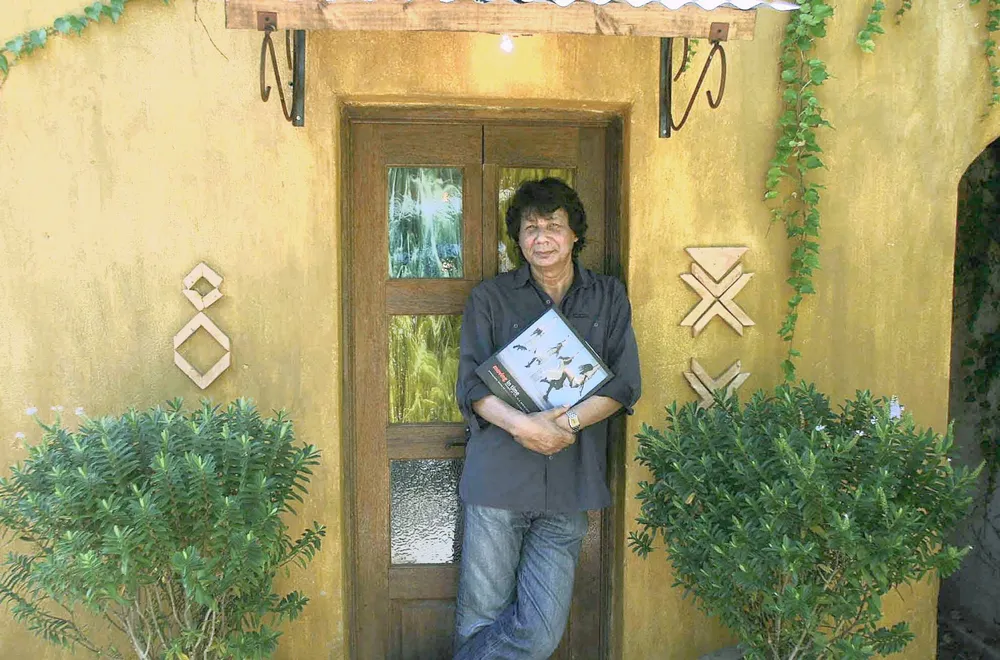Cape Town - Displayed with pride in my front room are
three framed black-and-white photographs
taken by George Hallett, who passed away this
week at the age of 78.
The one was taken in District Six, before the
removal of people when the area was declared
for whites only under the Group Areas Act;
the second is of a flock of birds in Bo-Kaap;
the third is of the late former president Nelson
Mandela.
The photographs capture a few moments in
the life of a remarkable photographer, who was
more feted internationally than locally. George
died peacefully in his sleep on Wednesday. He
had been ill for many months.
George was born in Hout Bay in 1942, and
left South Africa in his early twenties to pursue
a photographic career overseas. He lived in self-imposed exile in many cities in Europe, before
returning to Cape Town in 1995.
In that time, he had become, in my humble
opinion, probably the best black-and-white
portrait photographer ever in South Africa.

Legendary lensman George Hallett deserves more recognition for his work. Picture: Mujahid Safodien/African News Agency(ANA)
The first time I encountered the name
“George Hallett” was in the late 1970s when, as
a teenager, I was introduced to a series of books
called the African Writers Series. It featured
some of the top writers on the continent and
George had designed all the covers, including
taking the pictures.
I would meet him around 1980, outside
Newspaper House in Cape Town, with one
of my mentors who also became my friend,
Warren Ludski, who was then news editor
of the Cape Herald, where I started my
journalistic career.
I was impressed by this man, who walked
around with a small Leica camera around
his neck. He told me that as a photographer,
you must always be prepared to capture any
moment on film.
I was more impressed by his
humility, especially after Warren told me who
he was. I had been in the presence of greatness
without knowing it.
We would work together much later on my
first book, Making the Media Work For You, for
which George supplied all the photographs,
and later on my second book, Race.
George sat in on some of the interviews
for Race, so that he could have a better idea
of the kind of photograph required. He would
later arrange to photograph the people I
interviewed.
Among others, he photographed Professor
Carel Boshoff, the founder of white homeland
Orania, under an Africana tree; cricketer
Vincent Barnes, in the stands at Newlands
Cricket ground; traditional leader Phathekile
Holomisa, in a Xhosa outfit; he convinced
Obed Zilwa and Leo de Souza to dress up in
the way they did on their wedding day; and
he captured Manenberg residents Kenny and
Sielie Nolan in front of the infamous “Thug
Life” graffiti, painted on one of the courts in
the area.
He decided that I should be captured in
pensive mood. It is still one of my favourite
pictures.
We worked together many times and
spent hours talking at his flat in Frederick
Road, Claremont.
George took a portrait of my family and
helped to guide one of my daughters who
expressed an interest in photography.
Ironically, for someone who is known for
his portrait photography, George arguably
took two of the best news photographs ever
of Nelson Mandela, both on the same day.
The first picture, which has graced the pages
of publications throughout the world, showed
cleaners and other workers at Mandela’s Cape
Town residence rejoicing as they welcomed the
new president.
The second photograph, which I have,
shows Mandela talking on his cellphone. In the
original picture, a worker can be seen walking
past in the background with something on her
head. George felt that the picture worked better
with Mandela alone because it was not his
intention to create an image of a “privileged”
man in a suit versus the worker. He wanted to
capture Mandela in an unposed moment.
George was always conscious of the
potential power of his images and that is
why he spent so much time in planning his
portraits. I just wish that he received as much
acknowledgement in South Africa as he did
overseas.
Rest in peace, my friend.
* Ryland Fisher is an independent media professional. Follow
him on Twitter @rylandfisher
